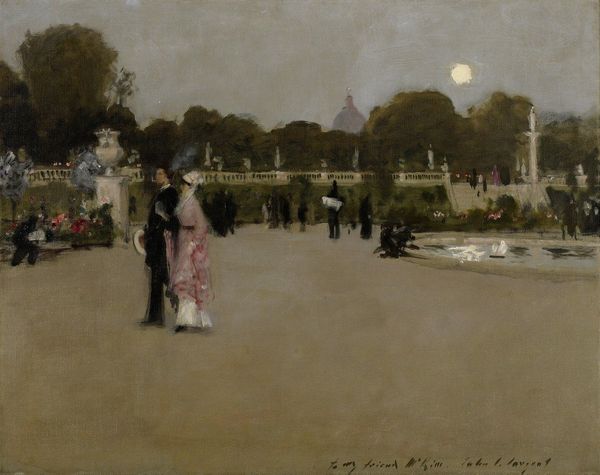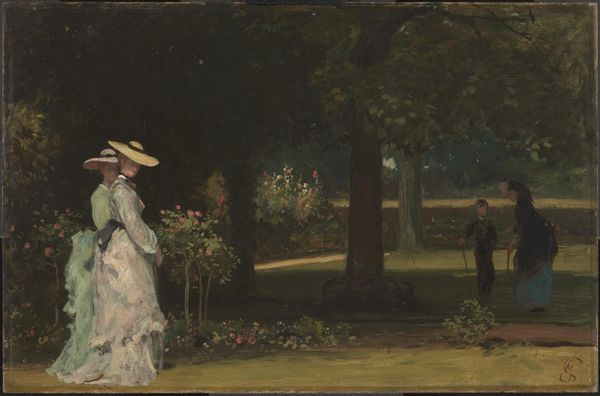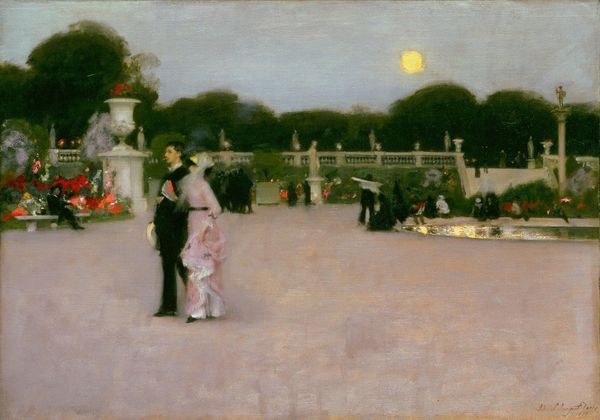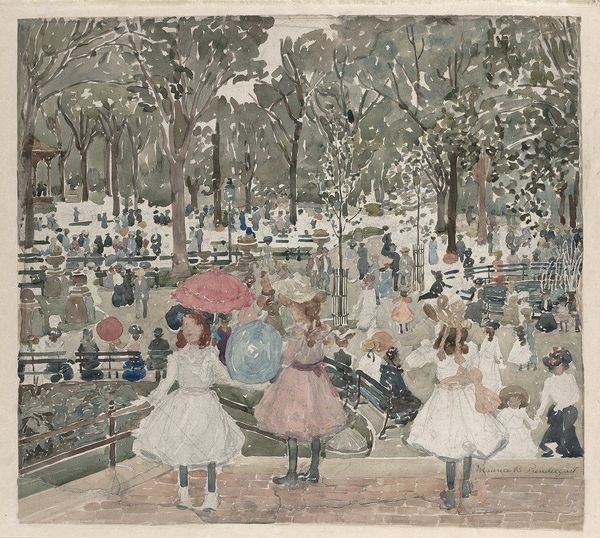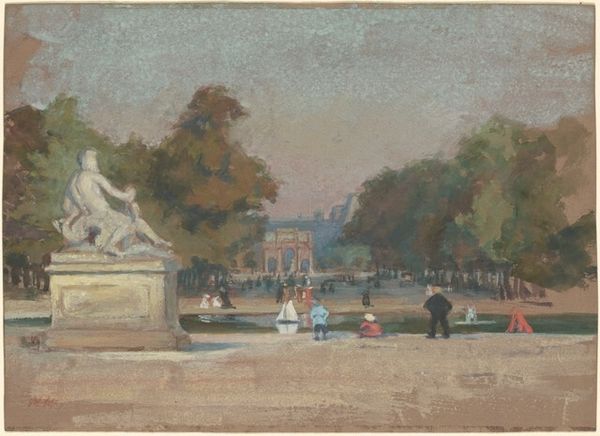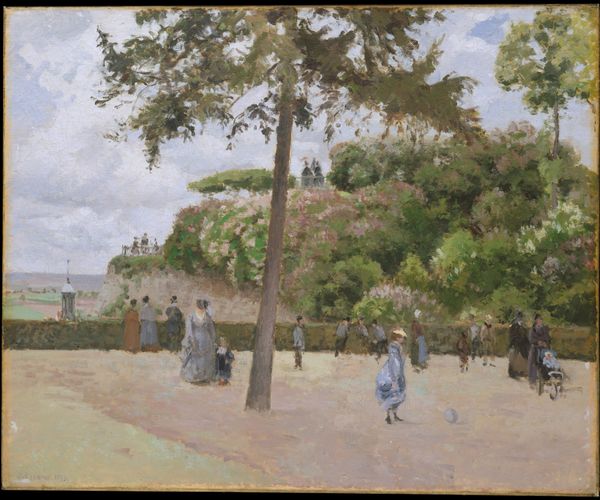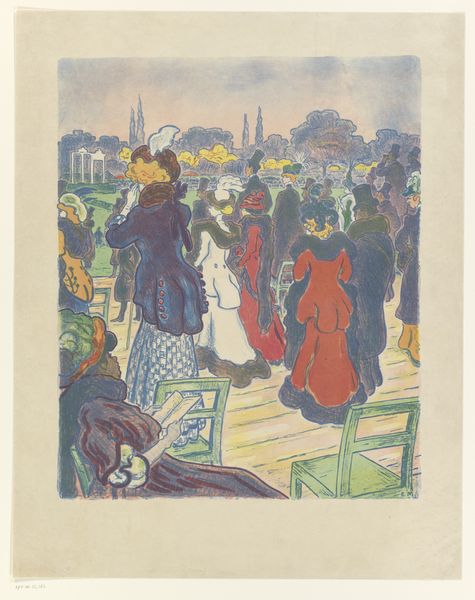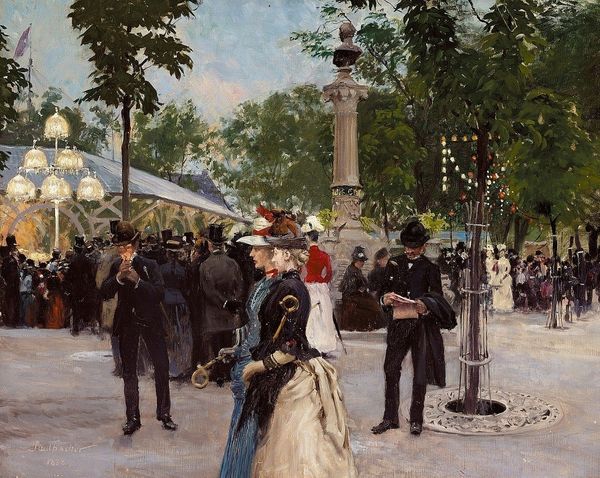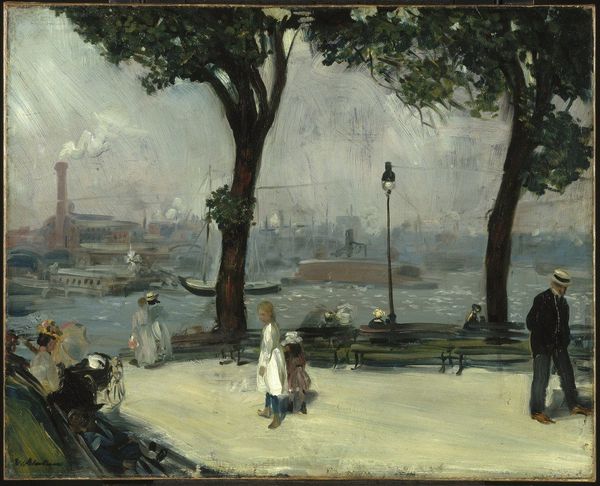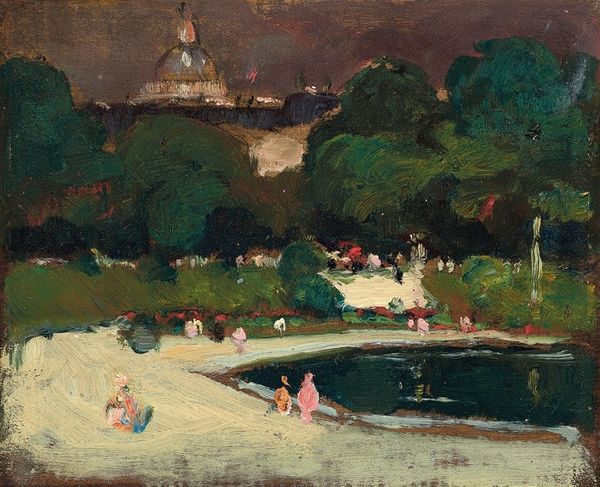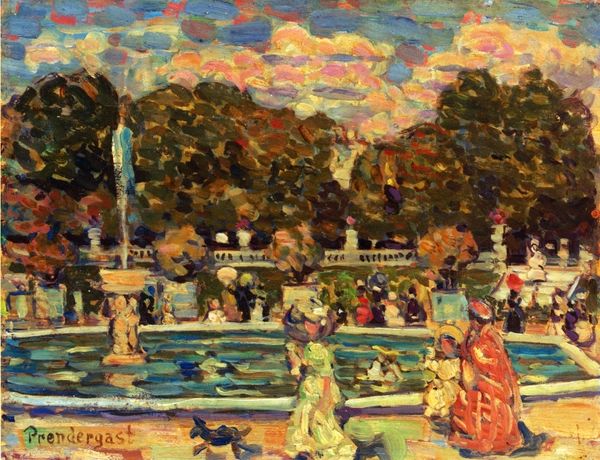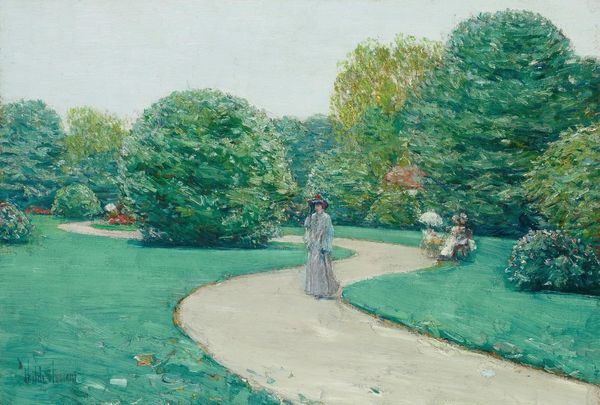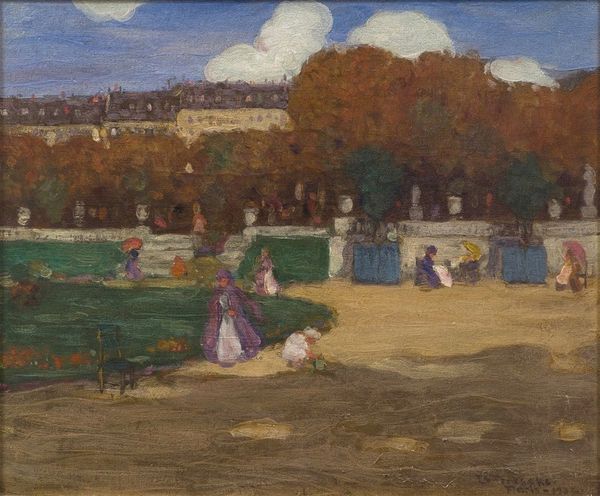
painting, plein-air, oil-paint, sculpture, oil-on-canvas
#
portrait
#
painting
#
impressionism
#
plein-air
#
oil-paint
#
sculpture
#
landscape
#
figuration
#
sculpture
#
cityscape
#
oil-on-canvas
#
watercolor
#
statue
Dimensions: 29 x 36 1/2 in. (73.66 x 92.71 cm) (canvas)28 1/2 x 36 in. (72.39 x 91.44 cm) (sight)36 3/8 x 44 x 3 1/4 in. (92.39 x 111.76 x 8.26 cm) (outer frame)
Copyright: Public Domain
Editor: This is John Singer Sargent's "Luxembourg Gardens at Twilight," painted around 1879 with oils on canvas, and held at the Minneapolis Institute of Art. It feels very subdued and sketch-like to me. The way Sargent uses light is particularly striking. What stands out to you about this work? Curator: Thank you for that fine introduction. I am especially drawn to the piece's composition. Notice how the dark masses of foliage and figures are strategically placed to guide the viewer's eye across the canvas. It almost becomes like a musical composition of sorts. What do you see? Editor: I see that! It is carefully organized. But also, the large empty space in the foreground…is that intentional? Curator: Absolutely. That large space offers both balance and tension to the work. Note that this area contrasts with the busy middle ground where Sargent renders the figures. The negative space is activated; we can imagine ourself as part of the experience. What thoughts does this evoke? Editor: The negative space does seem to bring the whole piece together, grounding the darker parts above. It also creates an anticipation of movement. You are right! Curator: Yes, I find the treatment of light within this negative space is brilliant; he seems to use it to amplify the mood and tonal values throughout. Do you notice any underlying geometric structure? Editor: Now that you point it out, the strong horizontal lines formed by the balustrade and the pathway establish order and balance. The figures and the trees offer variation, though. I see that the color choices are a cohesive palette. I see what you mean by his genius. Curator: Indeed. These observations, by which we understand how he manipulates these various structural elements, illuminate his compositional acumen. Such analysis permits insight into how such works endure and continue to enrich viewers' aesthetic experiences across time. Thank you.
Comments
minneapolisinstituteofart almost 2 years ago
⋮
Sargent was born in Italy to American parents and spent most of his career in Europe. He executed this view of a fashionable park in summer twilight while completing his art studies in Paris. Like the young French Impressionists whose work he respected, Sargent sought to capture fleeting moments in urban settings, evoking movement and, here, the particular diffuse light of Paris at dusk. The delicate harmony of pearly gray and white combined with touches of vivid color are pure Sargent. The painter executed two versions of this subject. He sold the slightly more finished one (now in the Philadelphia Museum of Art), but gave this one to Charles Follen McKim, the famous architect; it is inscribed "To my friend McKim." In his later years, Sargent could not recall in which order he executed the two paintings, but from certain subtle changes he thought perhaps the Minneapolis painting was first.
Join the conversation
Join millions of artists and users on Artera today and experience the ultimate creative platform.
